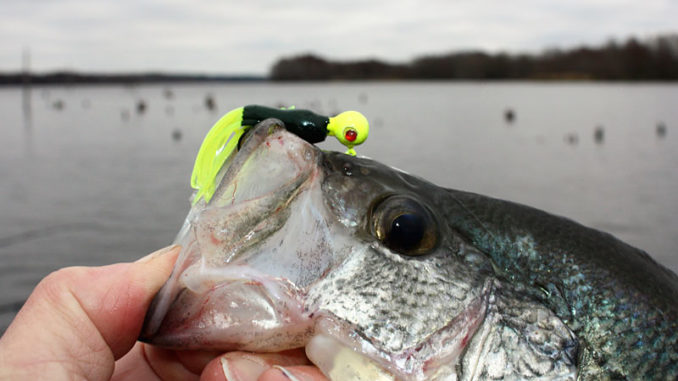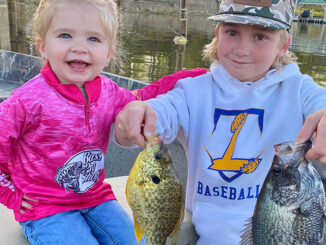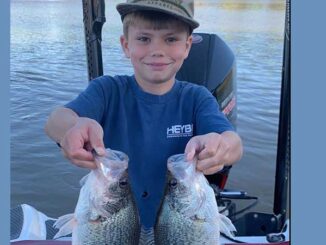
Catch Santee’s slab crappie with these tips
Turning the fishing page to 2022, it’s time to fulfill our New Year’s resolutions to catch more and bigger fish. But we don’t have to wait until March or April to begin carving those notches of success into our reel seats.
January is an excellent time to catch slab crappies on the Santee Cooper lakes. Gear up for cold weather and big fish.
Stump Jumping
Despite the cold weather, some super slabs are caught at Santee Cooper. And one of the most dependable methods is stump jumping.
Kevin Davis, owner of Blacks Camp on the Diversion Canal, said his primary target for stump jumping is the lower end of Lake Marion, and the process is aptly named.
“Much of Lake Marion is littered with standing trees, with many broken off right at the water’s surface,” Davis said. “This woody cover is ideal for holding crappie, especially during the winter. Crappies have access from deep water to shallow water vertically in the water column, an ideal situation for winter fishing.
“The basics are simple: get out into the flooded timber area of Lake Marion and start fishing these trees,” he said. “I fish all the standing trees and those broken off near the water level. I approach the target quietly with an electric motor and fish all the way around the object, generally circling at least three times.”
Davis (843-312-3080) maneuvers around the trees while constantly checking different depths. The depths where crappie will hold can change significantly from one trip to the next and are often weather-dependent, with warm, cloudy days more likely to produce shallower action. And on cold, bright days, crappies typically retreat deeper.
“Determining the best depth is like eating a bowl of hot grits,” Davis said. “I start at the edge of the bowl and slowly work my way into the middle so I don’t get burned. With stump jumping, I’ll start shallow and gradually fish deeper as I work the tree. On each pass I increase the depth until I find fish. Once I’ve worked the tree from shallow to deep, I move to the next tree.”
Weeding out trees
Davis said not all the trees hold crappie, so this is a process of covering a lot of trees, but fishing them effectively.
“I don’t fish fast, because winter crappies aren’t aggressive,” he said. “I’ll hold the jig steady, slowly swimming it around the target. I may give it a light ‘pop’ occasionally. But a slow, steady presentation is best. I’ll spend a few minutes on a tree then move. If I catch a crappie or two, I can begin to pattern the depth.”

Davis said the process is most successful when an angler works multiple trees during the course of a trip.
“It’s a numbers game,” he said. “It’s a one-or-two-fish per tree type of fishing on most days, but occasionally, we’ll catch multiple crappies off a single tree. If I fish 40 to 50 trees and catch a couple of fish on several of them, I’m likely going to have a limit of crappie. And odds are good they’ll be slabs.”
Davis said not all trees are created equal for holding crappies, and it’s a learning process as you fish multiple days. Some trees are simply configured better to attract crappie. And some have been enhanced by fishermen attaching brush to them.
The lower end of Lake Marion is easily accessible, and Davis targets that area. But the entire lake has the potential to produce this type of fishing success.
Rig for success
He said the fishing rig is important for consistent success during January.
“The water is usually clear at this time of the year, and light line is crucial,” he said. “I’ll use ultralight braid attached to a 10-foot section of 6-pound test fluorocarbon. The braid relays even the most sensitive bites. That’s important, because the bite is often subtle. I’ll use a 1/16- to 1/8-ounce jig, and I won’t hesitate to tip it with a minnow during the winter. I like a light-tipped rod about 8 to 10 feet long.”
Davis said the stump-jumping tactic has been around a long time but seems to be enjoying a resurgence in popularity.
“The more I fish this pattern, the more ‘go-to’ consistently productive trees I find, and that shortens the process,” he said. “Go now and go often to take advantage of this fishing. And it helps that we have an almost endless number of trees to fish in Lake Marion.”





Be the first to comment